Occasionally people ask me about how I work on my Milsurp stocks. To be clear, my knowledge is from reading the old Surplus Firearms magazines, trying different methods, and reading forums (mostly here and SurplusRifle Forum; the stock care section is the best).
To start, I never use chemical stripper (unless there is some chemical on the stock). Generally a good water based cleaner is all I need. I have tried Purple Power (in spray bottle, with about 50% water), Simple Green (also cut with water, Citrus Cleaner (dollar tree) and dollar tree knock offs of purple power. ny of these work best; I use whatever of these is handy, purple power probably being "the best", but I don't rush it. Wipe off what you can, then spray on your cleaner, let it sit a few minutes, then scrub with a sponge with the built in scotchbrite (again, dollar store). Wipe off, maybe use some warm water on the sponge, and repeat as necessary. This works on 90% of my milrurp stocks. I got an M14 stock from CMP that had some funky clear stain, looked like tape residue (but GooGone did not affect it), that was the only time I used a chemical stripper, and it did not impress me.
Soviet Stocks that are painted in lacquer are different, generally just a wipe with a damp cloth, maybe purple power, is all they need.
1. M14 stocks; I wiped off dust and any visible grease/cosmo then sprayed with PP and let sit.
[IMG] DSC_2710 by MrJHassard, on Flickr[/IMG]
DSC_2710 by MrJHassard, on Flickr[/IMG]
2. 2nd spray, note the stains on newspaper of what the PP was removing.
[IMG]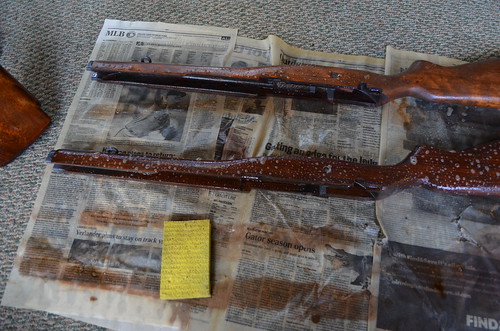 DSC_2714 by MrJHassard, on Flickr[/IMG]
DSC_2714 by MrJHassard, on Flickr[/IMG]
3. When done they will look like this. Note middle one still has a few stains, I kept working on it.....
[IMG] DSC_2757 by MrJHassard, on Flickr[/IMG]
DSC_2757 by MrJHassard, on Flickr[/IMG]
4. If you want to stain, now is the time. I used USSR stain (available from forum member USSR) on one just to try it out, great stuff. Otherwise I rarely add stain, most stocks I work on are milsurp so I just clean and re-oil, they don't often need stain.
I generally use BLO (generic from Lowes/Home Depot). I tried Tung once, it did not seem better (I used pure tung oil from Woodcrafters). Note: Make sure you buy Tung Oil or Boiled (or Raw) Linseed Oil. WM generally does not have it, but they carry (as does Lowes, HD) "Tung Oil Finish" (from a few companies, Fornbys is one). Some have used this with great results; I suggest you use pure oil for your first job.
I use Fairtrimmers Military OX oil frequently as my first few coats. It is a BLO base, with thinners (Turpentine?) and tints, formulated to accent grain and cartouches. Sme don't like it, some claim it doesn't work. I have had good results, the tints get into the broken fibers of cartouches (and gouges!), as well as soak up differently in different grain. It is very subtle, one coat and you can't tell much. It is BLO based so can be removed later like BLO with mineral spirits if needed (I never have). I generally do a few coats until I like the look, then cover with a few coats of BLO (more on that next).
Here are those same stocks:
[IMG]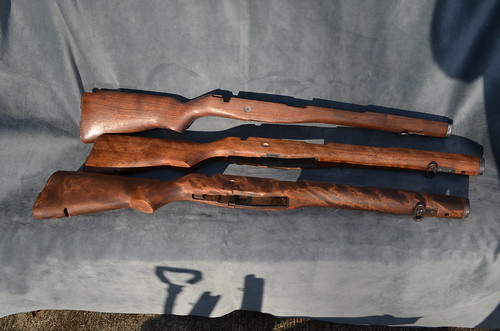 DSC_2859 by MrJHassard, on Flickr[/IMG]
DSC_2859 by MrJHassard, on Flickr[/IMG]
Top one I used USSR stain, other two just Fairtrimmers.
Regarding BLO: I used to apply it straight, usually with a 0000 steel wool pad, let it sit 30-60 min then wipe off. After hearing enough about thinning it I mixed a bottle with turpentine, I like that method. So, after cleaning, use Fairtrimmers if needed, then 2-4 coats of thinned BLO (1 do one coat per day, approximately!). You will know when the wood is not soaking it up much more. Then a few coats of straight BLO. I apply with the 0000 steel wool, then rub in by hand. The heat from rubbing helps penetrate. Let sit 30-60, wipe off. 2-4 coats. The bottom Birch M14 stock was done this way.
Tom's 1/3 mix: Saw forum users with it, gave it a try. It is his packaging of "Gunny's Paste", known by a few other names as well; it's a mix of BLO, Turpentine and Beeswax. You can make your own, but I'm told finding the right manufacturers (even generic) is trial and error, and I like to support fellow hobbyists, he sells it cheap enough. It's like shoe polish, but sort of clear. Rub it on by hand, create heat; let dry 30-60 min and buff off. A few coats gives a great looking glow. This can be your only finish, or can be the top coat over BLO, Tung, whatever.
Here is a CMP Refurb Daisy 853. I cleaned the stock with denatured alcohol and 0000 steel wool, and as it had "HC", the DA dissolved it, I kept the "H" obviously. When dry, all I did was rub in (wood was pretty dry!) a few coats of Tom's 1/3 mix.
[IMG] DSC_3929 by MrJHassard, on Flickr[/IMG]
DSC_3929 by MrJHassard, on Flickr[/IMG]
By the way, the CMP refurb Daisy's are a great deal; they have allegedly been overhauled and seals replaced; they come with a new accessory kit that has front sight inserts, sling and rear sight. Mine shoots great; Zvenoson can pump it himself finally.
More to follow
To start, I never use chemical stripper (unless there is some chemical on the stock). Generally a good water based cleaner is all I need. I have tried Purple Power (in spray bottle, with about 50% water), Simple Green (also cut with water, Citrus Cleaner (dollar tree) and dollar tree knock offs of purple power. ny of these work best; I use whatever of these is handy, purple power probably being "the best", but I don't rush it. Wipe off what you can, then spray on your cleaner, let it sit a few minutes, then scrub with a sponge with the built in scotchbrite (again, dollar store). Wipe off, maybe use some warm water on the sponge, and repeat as necessary. This works on 90% of my milrurp stocks. I got an M14 stock from CMP that had some funky clear stain, looked like tape residue (but GooGone did not affect it), that was the only time I used a chemical stripper, and it did not impress me.
Soviet Stocks that are painted in lacquer are different, generally just a wipe with a damp cloth, maybe purple power, is all they need.
1. M14 stocks; I wiped off dust and any visible grease/cosmo then sprayed with PP and let sit.
[IMG]
 DSC_2710 by MrJHassard, on Flickr[/IMG]
DSC_2710 by MrJHassard, on Flickr[/IMG]2. 2nd spray, note the stains on newspaper of what the PP was removing.
[IMG]
 DSC_2714 by MrJHassard, on Flickr[/IMG]
DSC_2714 by MrJHassard, on Flickr[/IMG]3. When done they will look like this. Note middle one still has a few stains, I kept working on it.....
[IMG]
 DSC_2757 by MrJHassard, on Flickr[/IMG]
DSC_2757 by MrJHassard, on Flickr[/IMG]4. If you want to stain, now is the time. I used USSR stain (available from forum member USSR) on one just to try it out, great stuff. Otherwise I rarely add stain, most stocks I work on are milsurp so I just clean and re-oil, they don't often need stain.
I generally use BLO (generic from Lowes/Home Depot). I tried Tung once, it did not seem better (I used pure tung oil from Woodcrafters). Note: Make sure you buy Tung Oil or Boiled (or Raw) Linseed Oil. WM generally does not have it, but they carry (as does Lowes, HD) "Tung Oil Finish" (from a few companies, Fornbys is one). Some have used this with great results; I suggest you use pure oil for your first job.
I use Fairtrimmers Military OX oil frequently as my first few coats. It is a BLO base, with thinners (Turpentine?) and tints, formulated to accent grain and cartouches. Sme don't like it, some claim it doesn't work. I have had good results, the tints get into the broken fibers of cartouches (and gouges!), as well as soak up differently in different grain. It is very subtle, one coat and you can't tell much. It is BLO based so can be removed later like BLO with mineral spirits if needed (I never have). I generally do a few coats until I like the look, then cover with a few coats of BLO (more on that next).
Here are those same stocks:
[IMG]
 DSC_2859 by MrJHassard, on Flickr[/IMG]
DSC_2859 by MrJHassard, on Flickr[/IMG]Top one I used USSR stain, other two just Fairtrimmers.
Regarding BLO: I used to apply it straight, usually with a 0000 steel wool pad, let it sit 30-60 min then wipe off. After hearing enough about thinning it I mixed a bottle with turpentine, I like that method. So, after cleaning, use Fairtrimmers if needed, then 2-4 coats of thinned BLO (1 do one coat per day, approximately!). You will know when the wood is not soaking it up much more. Then a few coats of straight BLO. I apply with the 0000 steel wool, then rub in by hand. The heat from rubbing helps penetrate. Let sit 30-60, wipe off. 2-4 coats. The bottom Birch M14 stock was done this way.
Tom's 1/3 mix: Saw forum users with it, gave it a try. It is his packaging of "Gunny's Paste", known by a few other names as well; it's a mix of BLO, Turpentine and Beeswax. You can make your own, but I'm told finding the right manufacturers (even generic) is trial and error, and I like to support fellow hobbyists, he sells it cheap enough. It's like shoe polish, but sort of clear. Rub it on by hand, create heat; let dry 30-60 min and buff off. A few coats gives a great looking glow. This can be your only finish, or can be the top coat over BLO, Tung, whatever.
Here is a CMP Refurb Daisy 853. I cleaned the stock with denatured alcohol and 0000 steel wool, and as it had "HC", the DA dissolved it, I kept the "H" obviously. When dry, all I did was rub in (wood was pretty dry!) a few coats of Tom's 1/3 mix.
[IMG]
 DSC_3929 by MrJHassard, on Flickr[/IMG]
DSC_3929 by MrJHassard, on Flickr[/IMG]By the way, the CMP refurb Daisy's are a great deal; they have allegedly been overhauled and seals replaced; they come with a new accessory kit that has front sight inserts, sling and rear sight. Mine shoots great; Zvenoson can pump it himself finally.
More to follow
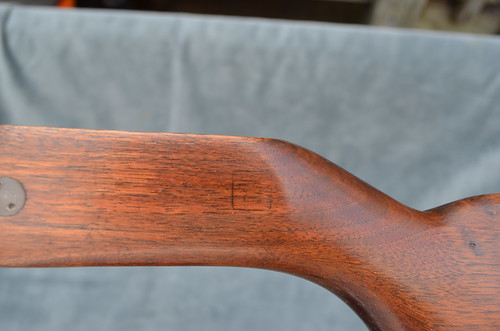




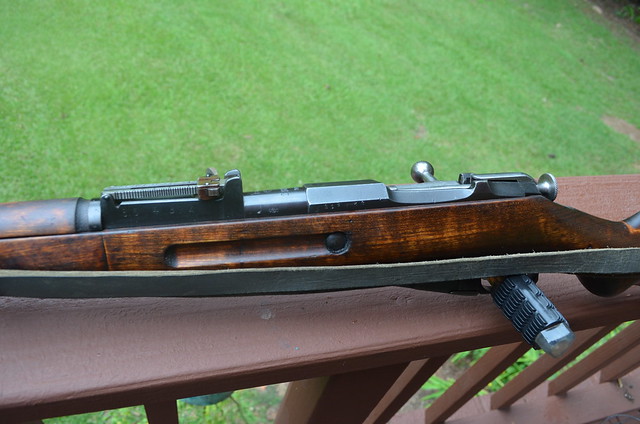

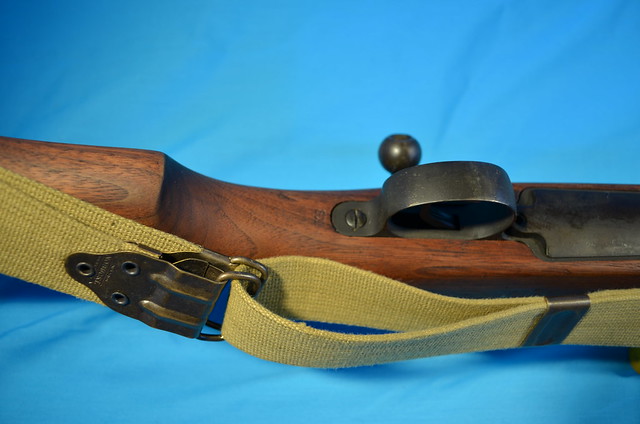









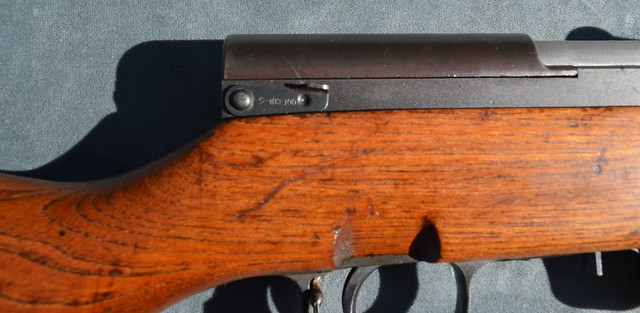
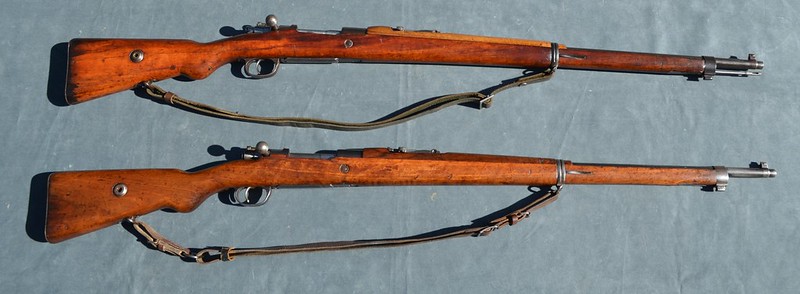




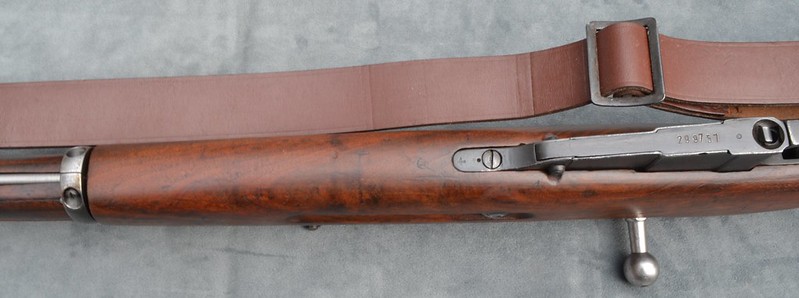
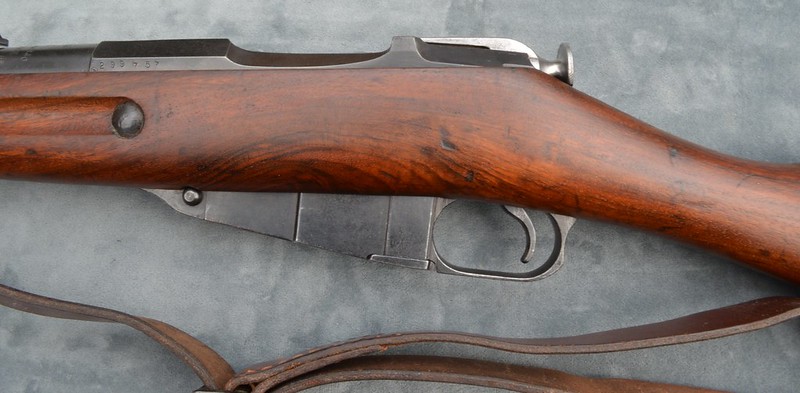

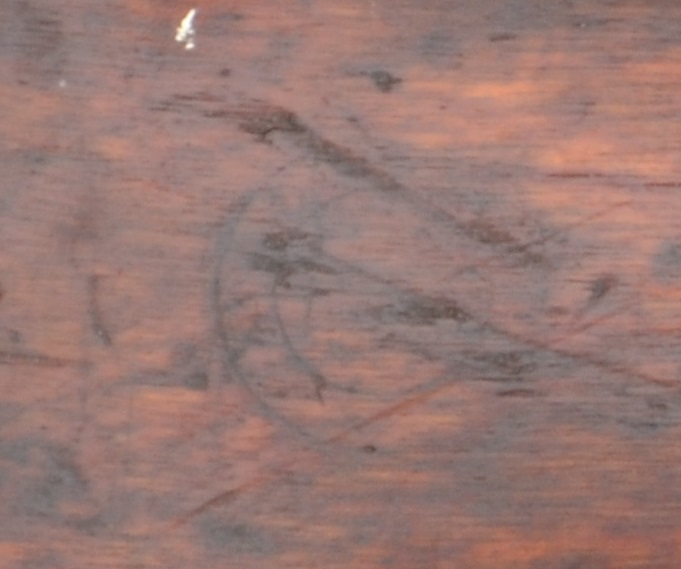
Comment